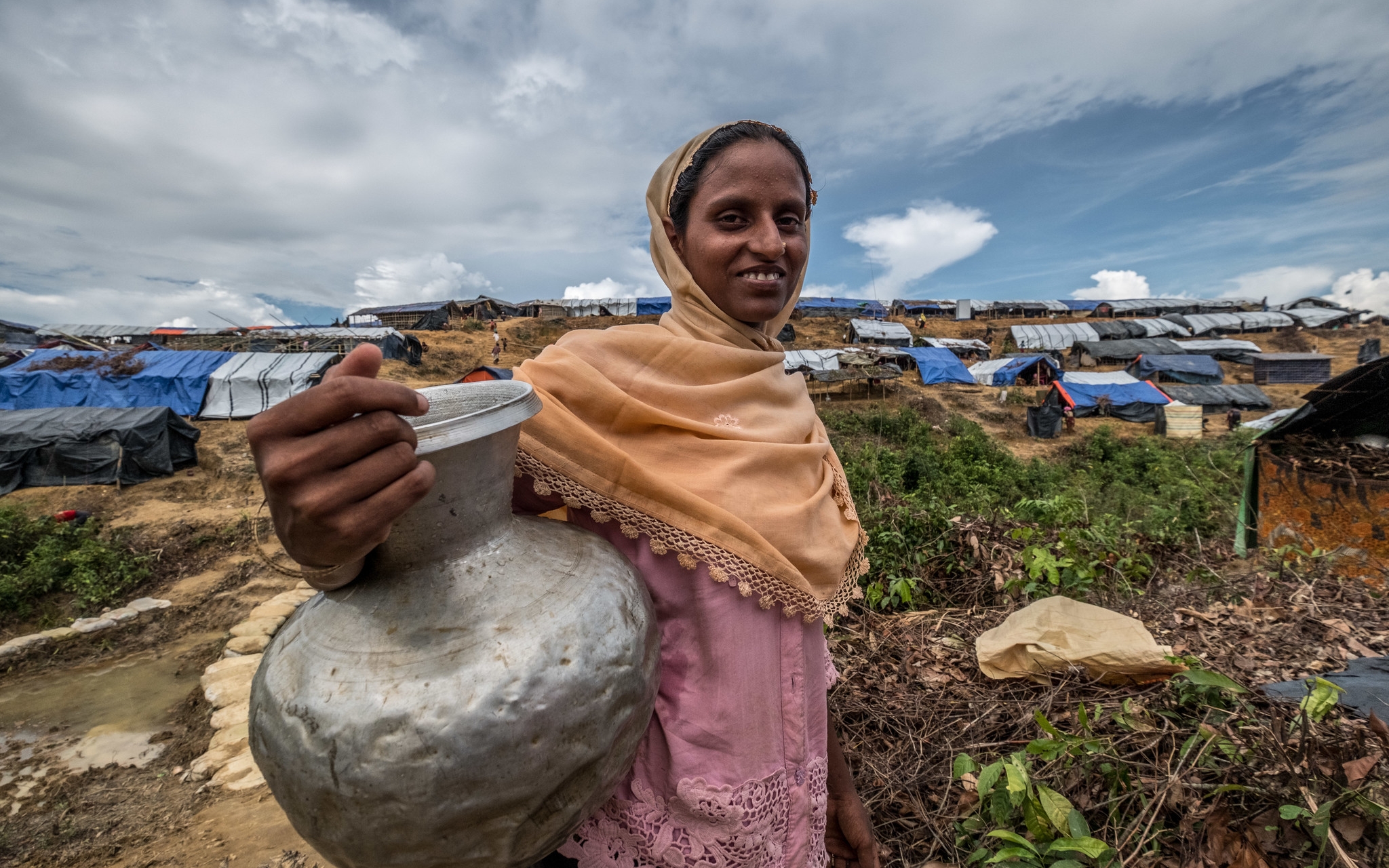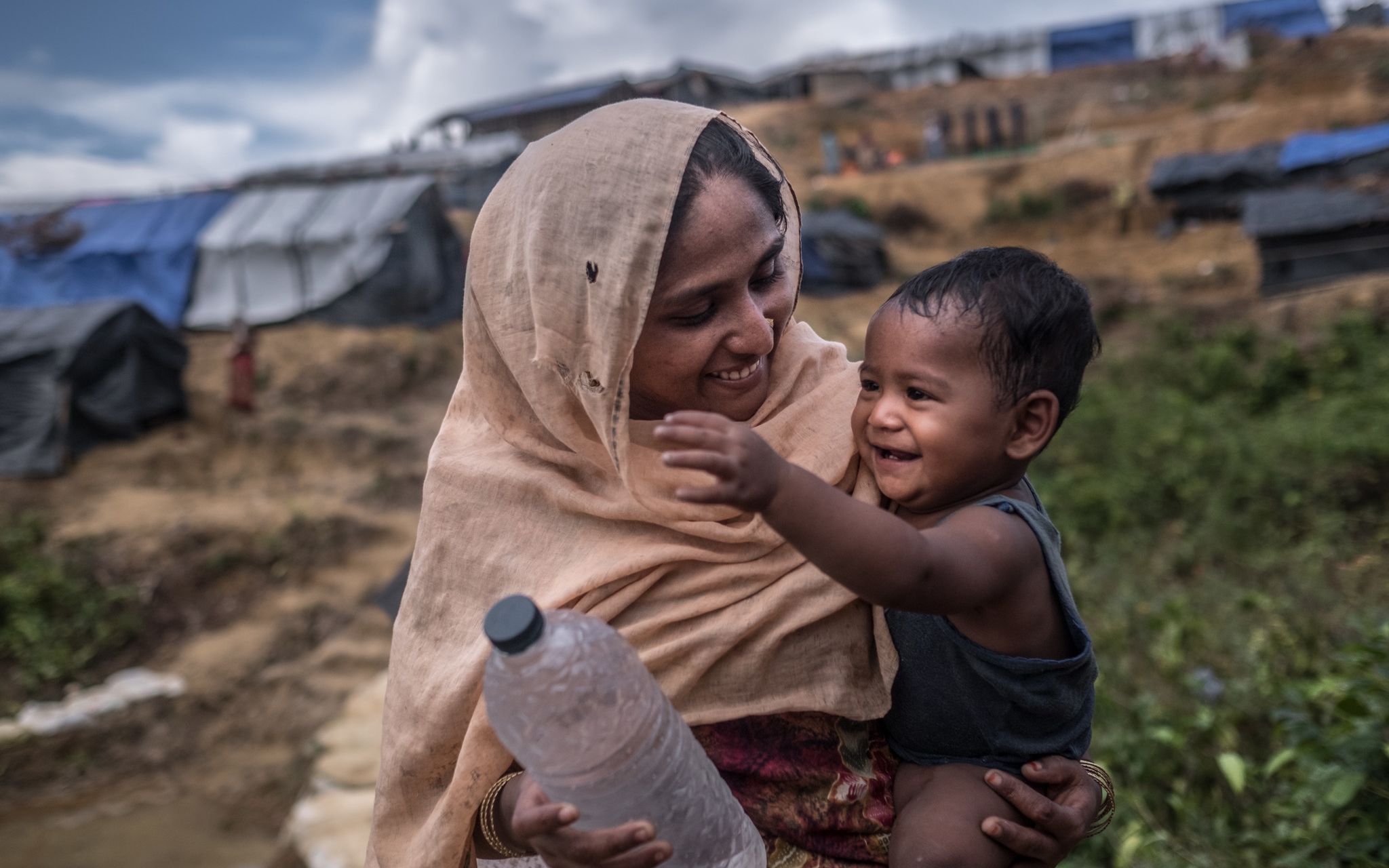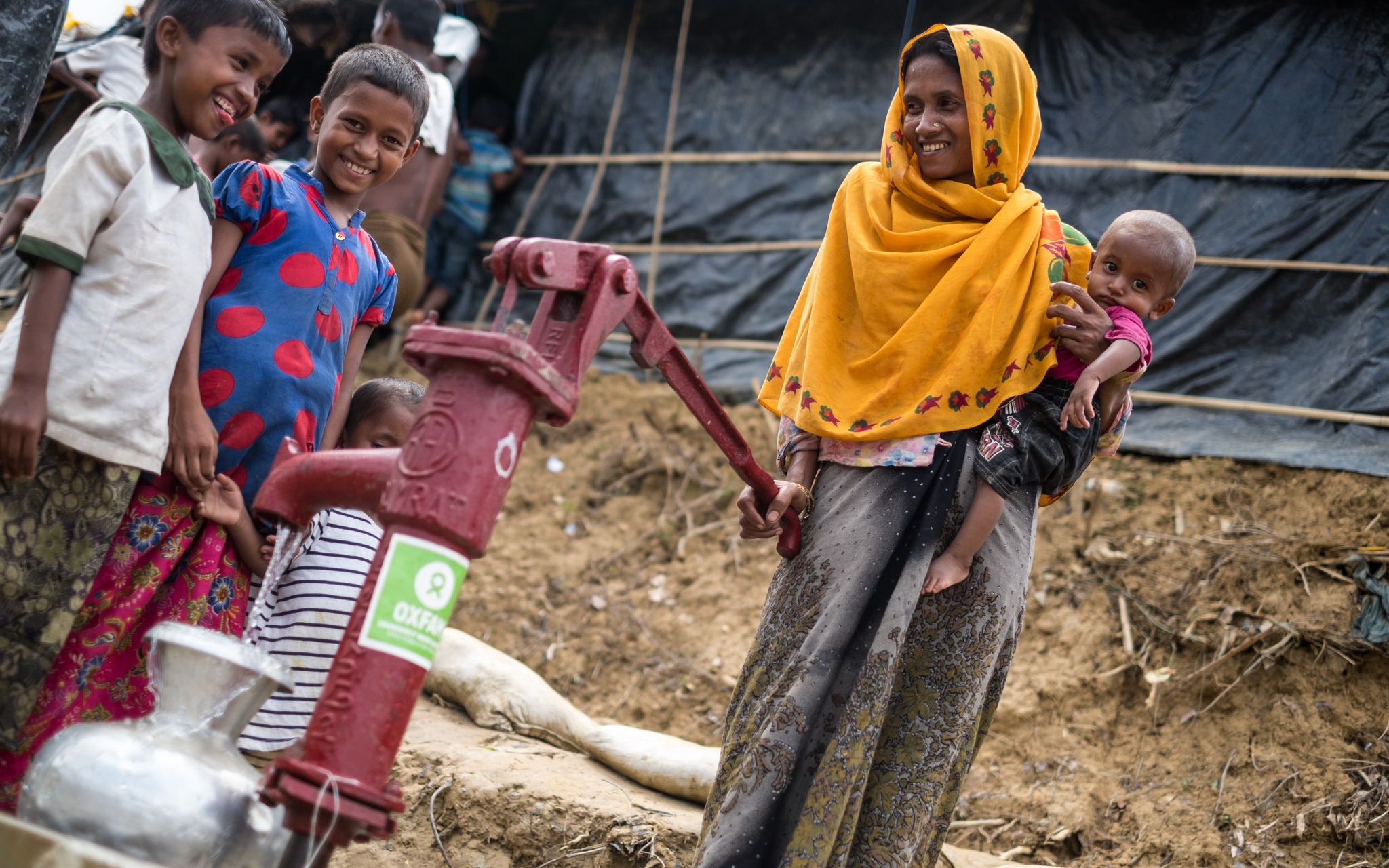Oxfam is supplying water pumps, latrines kits, and other sanitation equipment to prevent the spread of water-borne diseases in overcrowded makeshift refugee camps.
When you’re fleeing for safety, your number one priority is getting away. But what happens once you’ve escaped, and the place you’ve ended up presents new dangers, like malnutrition, the threat of sexual violence against women, and intestinal ailments from water-borne diseases?
That’s what is happening in Bangladesh. Since August 25, more than 600,000 Rohingya refugees have arrived in Bangladesh, leading to a humanitarian crisis. They are living in cramped makeshift camps, which are not equipped to handle such an influx of people.
Oxfam is responding to the crisis and has reached 185,000 refugees across six sites in Bangladesh with clean, safe drinking water, portable toilets, and hygiene promotion, and is also providing food rations of rice, sugar, and fortified biscuits.
Four mothers describe how access to clean water and sanitation have improved their lives.
Laila

“[I] fled into the jungle just holding my child,” says Laila, 25, who resides in Kutupalong Camp with her husband and son. “I didn’t take anything, and I don’t know where any of my friends are.” At first, they drank from a nearby waterfall and stream, but then the water began to make them feel sick.
Laila laments that in her first 20 days in the camp, she only showered twice. “I have washed at the stream at night, and I don’t feel safe,” she says.
Oxfam recently installed a water pump near her home. “We have no money, food, or medicine,” she says. “Only the water is fixed, and for that we are thankful – now we get clean water every day.”
Habiba

“When we reached the river, we had to leave everything–all our rice and food,” says Habiba, 22, a mother of three who also lives in Kutupalong Camp. “When we arrived, we sat in the rain, and got soaked–there was no shelter, so we just sat and waited.”
“We are really thankful for this water,” she says. “Before it was here, the children were sick. They have not seen [clean] water like this for a while, so they are really excited. The water tastes good. The other water was so smelly.”
Ayesha

Ayesha lives in Balukhali Camp with her four children, two boys and two teenage girls. Two days ago, Oxfam installed a latrine near their home, so they are no longer going to the bathroom in the open.
“We used to dig holes nearby to go to the toilet,” says Ayesha. “It used to smell bad, but we had no other choice.”
“It was so heartbreaking for my teenage daughters to go to the toilet like that,” she says. “It has become so much easier to go to the bathroom, as it is close to our home, and so much more dignified for my daughters.”
Sumania

Sumania and her seven children live in Moinnarghona Camp, where Oxfam recently installed latrines and water pumps.
“We used an axe to cut the jungle and land here, and we built the house,” says Sumania. “Since we were on a hill, there was no water or latrine.” As a result, her children contracted diarrhea. “When we had dirty water, we were running in and out of the house, and [to] the doctor.”
“Now that there is a water pipe, we can add medicine to the water,” she says. “The children are feeling better. The children can wash their bodies, and drink safe water.”
Right now, Oxfam is responding to ongoing crises with live-saving measures and long-term solutions. Meet a few of the individuals affected and find out how you can help.
